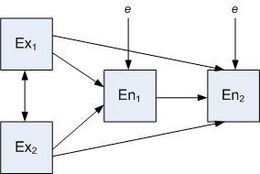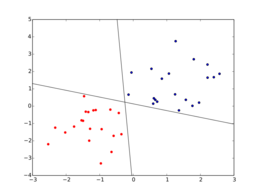Social:Social statistics
Social statistics is the use of statistical measurement systems to study human behavior in a social environment. This can be accomplished through polling a group of people, evaluating a subset of data obtained about a group of people, or by observation and statistical analysis of a set of data that relates to people and their behaviors.
Statistics in the social sciences
History
Adolph Quetelet was a proponent of social physics. In his book Physique sociale[1] he presents distributions of human heights, age of marriage, time of birth and death, time series of human marriages, births and deaths, a survival density for humans and curve describing fecundity as a function of age. He also developed the Quetelet Index.
Francis Ysidro Edgeworth published "On Methods of Ascertaining Variations in the Rate of Births, Deaths, and Marriages" in 1885[2] which uses squares of differences for studying fluctuations and George Udny Yule published "On the Correlation of total Pauperism with Proportion of Out-Relief" in 1895.[3]
A numerical calibration for the fertility curve was given by Karl Pearson in 1897 in his "The Chances of Death, and Other Studies in Evolution"[4] In this book Pearson also uses standard deviation, correlation and skewness for studying humans.
Vilfredo Pareto published his analysis of the distribution of income in Great Britain and Ireland in 1897,[5] this is now known as the Pareto principle.
Louis Guttman proposed that the values of ordinal variables can be represented by a Guttman scale, which is useful if the number of variables is large and allows the use of techniques such as ordinary least squares.[6]
Macroeconomic statistical research has provided stylized facts, which include:
- Bowley's law (1937) regarding the proportion between wages and national output [7]
- The Phillips curve (1958) regarding the relation between wages and unemployment[8]
Statistics and statistical analyses have become a key feature of social science: statistics is employed in economics, psychology, political science, sociology and anthropology.
Statistical methods in social sciences



Methods and concepts used in quantitative social sciences include:[9]
Statistical techniques include:[9]
Covariance based methods
- Regression analysis
- Canonical correlation
- Causal analysis
- Multilevel models
- Factor analysis
- Linear discriminant analysis
- Path analysis
- Structural Equation Modeling
Probability based methods
Distance based methods
Methods for categorical data
- Classification analysis
- Cohort analysis
Usage and applications
Social scientists use social statistics for many purposes, including:
- the evaluation of the quality of services available to a group or organization,
- analyzing behaviors of groups of people in their environment and special situations,
- determining the wants of people through statistical sampling
- evaluation of wage expenditures and savings[10]
- preventing industrial diseases[10]
- prevention of industrial accidents[10]
- labour disputes, such as supporting the Anthracite Coal Strike Commission of 1902-1903[11]
- supporting governments in times of peace and war[12]
Reliability
The use of statistics has become so widespread in the social sciences that many universities such as Harvard, have developed institutes focusing on "quantitative social science." Harvard's Institute for Quantitative Social Science focuses mainly on fields like political science that incorporate the advanced causal statistical models that Bayesian methods provide. However, some experts in causality feel that these claims of causal statistics are overstated.[13][14] There is a debate regarding the uses and value of statistical methods in social science, especially in political science, with some statisticians questioning practices such as data dredging that can lead to unreliable policy conclusions of political partisans who overestimate the interpretive power that non-robust statistical methods such as simple and multiple linear regression allow. Indeed, an important axiom that social scientists cite, but often forget, is that "correlation does not imply causation."
Further reading
- Blalock, H.M. Jr, ed. (1974), Measurement in the Social Sciences, Chicago, Illinois: Aldine Publishing, ISBN 0-202-30272-5, https://books.google.com/books?id=95tXSwNvVR8C&q=measurement+social, retrieved 10 July 2010
- S. Kolenikov, D. Steinley, L. Thombs (2010), Statistics in the Social Sciences: Current Methodological Developments, Wiley
- Blalock, Hubert M (1979), Social Statistics, New York: McGraw-Hill, ISBN 0-07-005752-4
- Irvine, John, Miles, Ian, Evans, Jeff, (editors), "Demystifying Social Statistics ", London : Pluto Press, 1979. ISBN:0-86104-069-4
- Miller, Delbert C., & Salkind, Neil J (2002), Handbook of Research Design and Social Measurement, California: Sage, ISBN 0-7619-2046-3, https://books.google.com/books?id=sgoHv5ZP6dcC&q=measurement+social, retrieved 10 July 2010
- Dietz, Thomas, & Kalof, Linda (2009), Introduction to Social Statistics, California: Wiley-Blackwell, ISBN 9781405169028, https://books.google.com/books?id=k086E0pT0RwC
References
- ↑ A. Quetelet, Physique Sociale, https://archive.org/details/physiquesociale00quetgoog
- ↑ Edgeworth, F. Y. (1885). "On Methods of Ascertaining Variations in the Rate of Births, Deaths, and Marriages". Journal of the Statistical Society of London 48 (4): 628–649. doi:10.2307/2979201.
- ↑ Yule, G. U. (1895). "On the Correlation of total Pauperism with Proportion of Out-Relief". The Economic Journal 5 (20): 603–611. doi:10.2307/2956650.
- ↑ K. Pearson, The Chances of Death, and Other Studies in Evolution, 1897 https://archive.org/details/chancesdeathand00peargoog
- ↑ V. Pareto, Cours d'Économie Politique, vol. II, 1897
- ↑ Guttman, L. (1944). "A Basis for Scaling Qualitative Data". American Sociological Review 9 (20): 603–611. doi:10.2307/2086306.
- ↑ A. Bowley, Wages and income in the United kingdom since 1860, 1937
- ↑ W. Phillips, The Relation Between Unemployment and the Rate of Change of Money Wage Rates in the United Kingdom, 1861–1957, published 1958
- ↑ 9.0 9.1 Miller, Delbert C., & Salkind, Neil J (2002), Handbook of Research Design and Social Measurement, California: Sage, ISBN 0-7619-2046-3, https://books.google.com/books?id=sgoHv5ZP6dcC&q=measurement+social
- ↑ 10.0 10.1 10.2 Hoffman, Frederick (1908). "Problems of Social Statistics and Social Research". Publications of the American Statistical Association 11 (82): 105–132. doi:10.2307/2276101.
- ↑ Willcox, Walter (1908). "The Need of Social Statistics as an Aid to the Courts". Publications of the American Statistical Association 13 (82).
- ↑ Mitchell, Wesley (1919). "Statistics and Government". Publications of the American Statistical Association 16 (125): 223–235. doi:10.2307/2965000.
- ↑ Pearl, Judea 2001, Bayesianism and Causality, or, Why I am only a Half-Bayesian, Foundations of Bayesianism, Kluwer Applied Logic Series, Kluwer Academic Publishers, Vol 24, D. Cornfield and J. Williamson (Eds.) 19-36.
- ↑ J. Pearl, Bayesianism and causality, or, why I am only a half-bayesian http://ftp.cs.ucla.edu/pub/stat_ser/r284-reprint.pdf
External links
- Statistics at Curlie
- Social science statistics centers
- Center for Statistics and Social Sciences, University of Washington
- Center for the Promotion of Research Involving Innovative Statistical Methodology, New York University, NY
- Centre for Research Methods, Faculty of Social Sciences, University of Helsinki, Finland
- Cornell Institute for Social and Economic Research
- Harvard Institute for Quantitative Social Science
- Inter-University Consortium for Political and Social Research
- National Centre for Research Methods, UK
- Social Statistics Department, University of Manchester
- Social Statistics Division, School of Social Sciences, University of Southampton, UK
- Statistical databases for social science
- Inter-University Consortium for Political and Social Research
- UN Statistics Division- Demographic and Social Statistics
- Organisation for Economic Co-Operation and Development (OECD)
- US Bureau of Labor Statistics
- International Labour Organisation – LABORSTA
- Unionstats.com
 |


